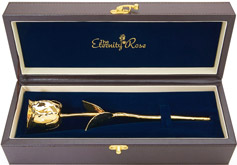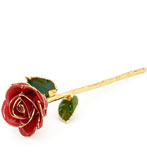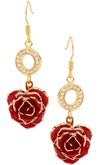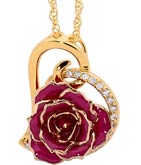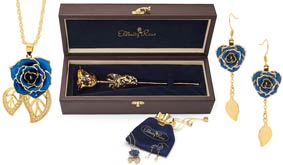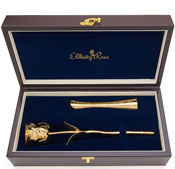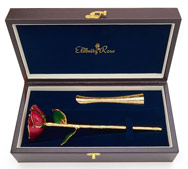Give your loved one a traditional gift for Valentine's Day with a difference – a breathtaking Eternity Rose.
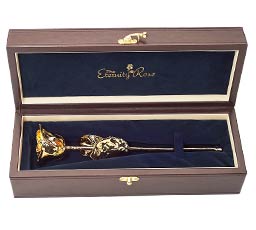
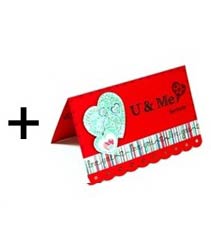
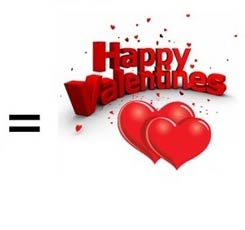
Each Eternity Rose is formed from a genuine natural rose blossom that has been grown lovingly and then dipped in a precious metal like silver, platinum or 24K gold to preserve its beauty eternally.
A flower from The Eternity Rose is a perfect blend of those popular Valentine's Day gifts – jewellery and roses. Any special lady will delight in receiving one of these stunning blossoms, whether she be your girlfriend, wife, mother or grandmother. Simply add a card and you can be sure of a perfect gift!
All over the world, roses are an iconic love symbol, and that is why each Eternity Rose has been created to immortalise this famous symbol into a piece of stunning and unique artwork which can be prominently displayed as a declaration of adoration.
Where did Valentine's Day originate? Let's find out more about the heritage of this well-known occasion.
Where Did Valentine's Day Begin?
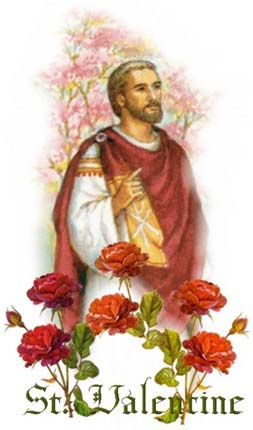
St. Valentine's Day is celebrated on 14 February each year and is actually linked to multiple saints rather than just one.
One theory is that the occasion has its basis on legends about two martyred saints, each called Valentius or Valentine.
One was a priest during the 3rd century in Rome. At that time, the emperor Claudius II had ruled that soldiers were not permitted to marry, since men who had no wives or children were more focused in battle. Valentine disagreed with this order, feeling pity for the couples who were forbidden from marrying even though they loved each other, and therefore he continued to carry out wedding ceremonies secretly against the Emperor's orders.
He was caught and imprisoned, but while he was waiting to be executed, the legend states that he sent a love letter to a woman who he had fallen in love with, signing it from “your Valentine”.
This is said to be the original Valentine, and the date of the celebration is believed to be in remembrance of the execution or burial of the priest in around AD 270.
A different belief says that the Christian church decided to celebrate Valentine's Day in the middle of February as a way of Christianising the pagan festival of Lupercalia.
Originally held on 15 February, the Lupercalia festival was held to honour the god Faunus who was responsible for fertility, and to pay homage to Romulus and Remus, the founders of Rome.

During this festival, the Luperci priests gathered together at a sacred cave where it was said that the twins had been raised by a wolf. There would be a sacrifice of a dog or goat and a strip of hide, dipped in blood, taken through town and gently slapped onto the women and the fields of crops. This ritual was said to promote fertility and ensure a good harvest.
Unmarried women would then write their names down and put them into an urn, after which the unmarried men would select one name, and that woman would then be his partner for the year until the next year's festival.
Frequently, the matches made at the Lupercalia resulted in a marriage, and this has led to its connect with Valentine's Day.
In the late 5th century, the Lupercalia festival was outlawed as un-Christian and banned. It was then that the Pope declared that St. Valentine's Day would be celebrated on 14 February, but it was not for many years that the day was associated with love.
A third theory about the origins of Valentine’s Day dates back to France and England during the Medieval period, when there was a belief that 14 February was the date on which birds started mating. As many varieties of bird have life partners, this led to Valentine's Day being linked with romance and lasting love.
The Original Valentine
Although lovers exchanged greetings on Valentine's Day as long ago as the Medieval period, a written Valentine has not been recorded before around 1400.
This earliest Valentine is part of a collection of manuscripts in London's British Library and is a piece of poetry which was written by the imprisoned Duc d'Orleans to send to his wife during 1415, after he was captured and held prisoner after the Battle of Agincourt.
There is also evidence from several years later that suggests that Henry V used a writer's services to write a love message as a Valentine for his wife, Queen Catherine.
The Modern Valentine

In recent years, Valentine's Day has become a huge celebration across France, Australia, Mexico, Canada, the USA and the UK. It first began to increase in popularity during the 1600s and by 1750, couples were commonly exchanging notes and gifts on February 14.
All classes in society participAted in this practice, and by the turn of the 20th century, cards were commonly being sent as a Valentine greeting due to the advancements made in printing technology.
Today, around 1 billion cards are exchanged on Valentine's Day every year and this means that this date is the second most lucrative (and popular) occasion of the year on which to send a card, being surpassed only by Christmas.
As well as presEnting your true love with a heartfelt card, try offering something a little different this year and surprise your partner with a beautiful Eternity Rose. There is no better way to express a message of love than by giving this stunning gift.
A flower from The Eternity Rose is also a wonderful suggestion as a present for Mother's Day, and any mother will be delighted to receive such a gorgeous token of esteem on her special occasion.










